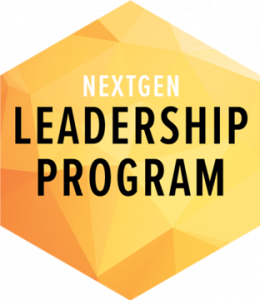Are you an includer or a developer? An achiever or arranger? Whether you realize it or not, you are inherently better at certain things in the workplace than others. For me, I am best at strategic thinking and executing. I was able to uncover these strengths in my work style by taking the
 StrengthsFinder assessment.
StrengthsFinder assessment.
For this week’s NextGen Leadership post, we give you the rundown of what StrengthsFinder is and how it can help you and your colleagues work more effectively alone and with each other.
How to Determine Strengths
The StrengthsFinder assessment was developed by Gallup and helps identify what individuals naturally do best and how to turn these talents into action. Identifying strengths is key in the workplace because agencies can then place individuals who are best suited to a certain job or project in that position, promoting effective work in an efficient manner. Even better, when an employee is leveraging their strengths, the become more engaged in their jobs and are more likely to report having an excellent quality of life.
The four main categories of strengths are executing, influencing, relationship building and strategic thinking. Each category is further broken down into 34 more specific categories that reflect the strengths that an individual can have.
The easiest way to figure out your team members’ strengths is by taking the StrengthsFinder assessment. However, if you don’t want to or cannot leverage the assessment in your office, you can simply ask your employees what they are good at. Ask what they enjoy doing and what tasks bring them happiness and delve into why that is and how they can incorporate these tasks into their day-to-day assignments at work.
How to Leverage Strengths
The most important thing to do once you figure out your strengths and those of your employees is to ensure that they are assigned tasks that allow them to use those strengths. For example, someone who has the primary strength of “woo,” or winning others over, thrives when working with a diverse range of people. However, if this individual is stuck in the back of the office staring at spreadsheets all day, they will not be working at peak productivity. In order to feed this strength, a woo will likely end up wandering the halls and avoiding work in order to maintain or make new human contact.
As a result, managers must ensure that they are integrating their employees’ top strengths into their core job functions. One way to do this is to craft job descriptions to strengths rather than to former positions. Doing this allows you to hire individuals who ready to perform in the role you are hiring them in and will also boost engagement among your overall workforce.
Many personality tests can be expensive to administer however, that doesn’t mean you still can’t figure out and leverage the strengths of the individuals in your office. There are a variety of free, online assessments that help you identify core strengths or personality traits that you can use to foster a more effective and collaborative workplace. Some of these include:
- The Workuno Strengths Test
- DISC Personality Test (focused more on interpersonal communications)
- Open Extended Jungian Type Scales 1.2
- Big Five Factor Markers
So what are you waiting for? Start figuring out the personalities in your office today.
For more tips and information on professional development, check out all of the NextGen Leadership program’s blogs here.





This is one of my all time favorite assessments. The concept of focusing on your strengths to shine brighter makes a ton of sense. Not to mention, it’s bound to come up in interviews or with a boss – “what’s your strengths?” This assessment provides a easy, succinct way to state them.
[…] My path forward on the management track began with learning the basics of recruiting, hiring, coaching, mentoring, assigning projects and following up, and how to balance my workload while also ensuring others were successful. I learned empathy, the importance of critical conversations and how to tap into people’s strengths. […]